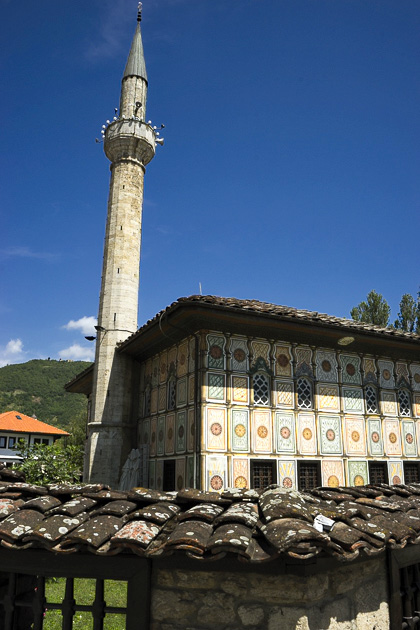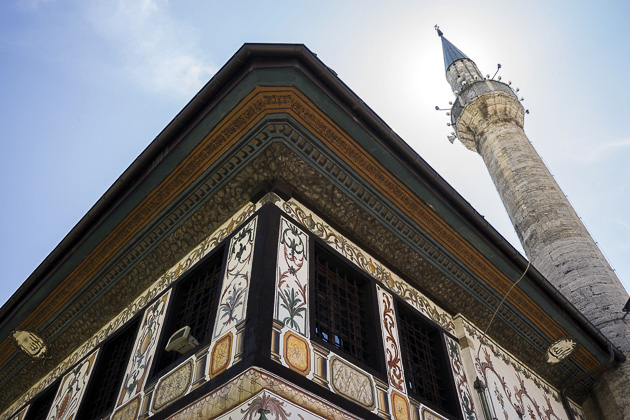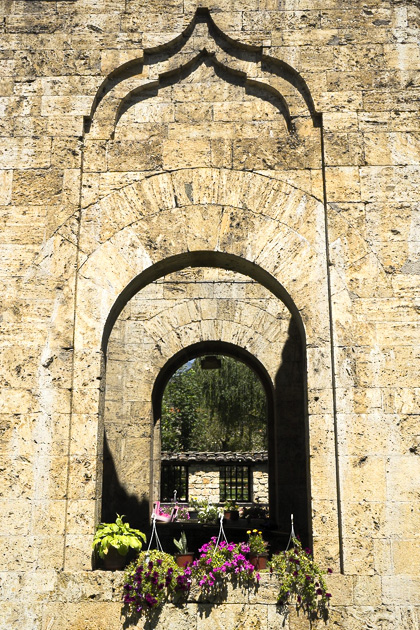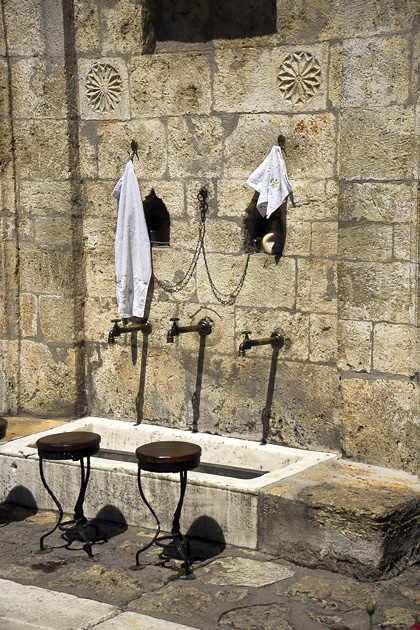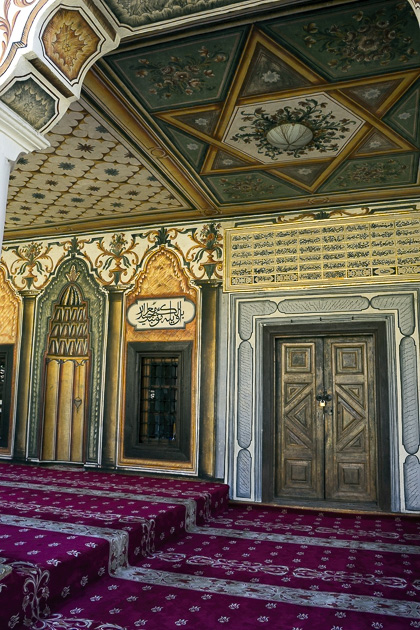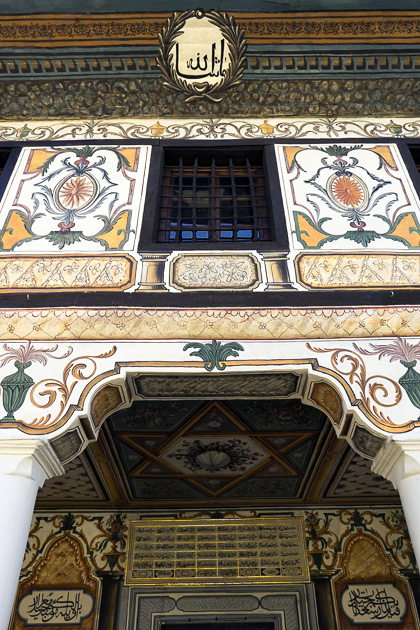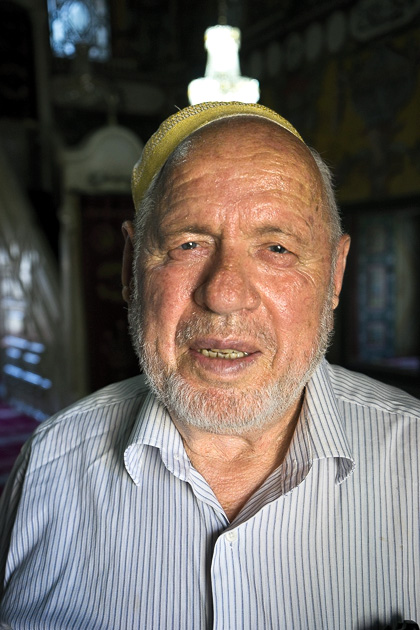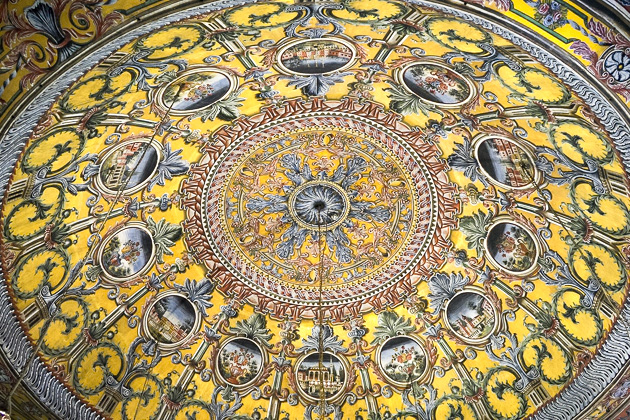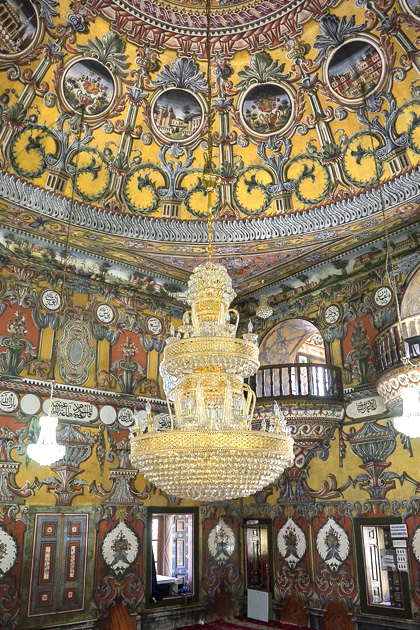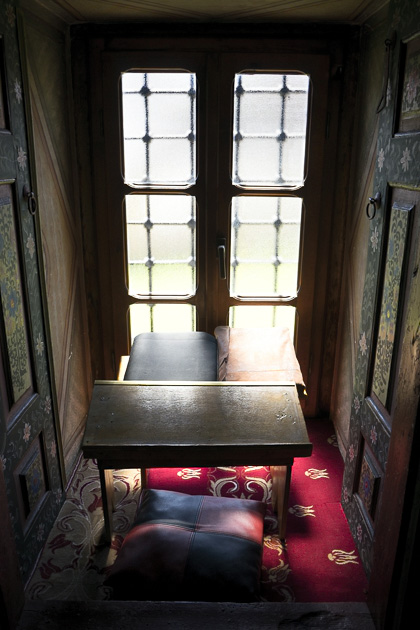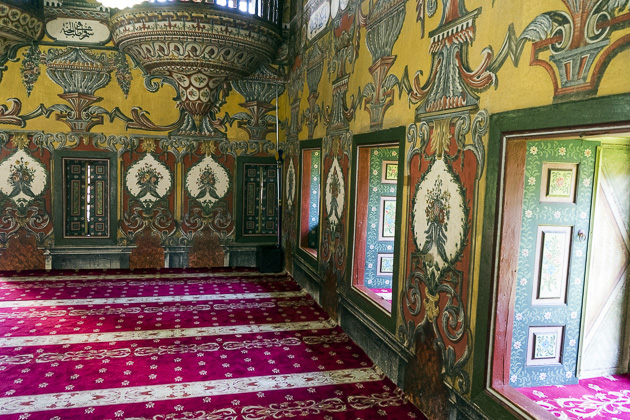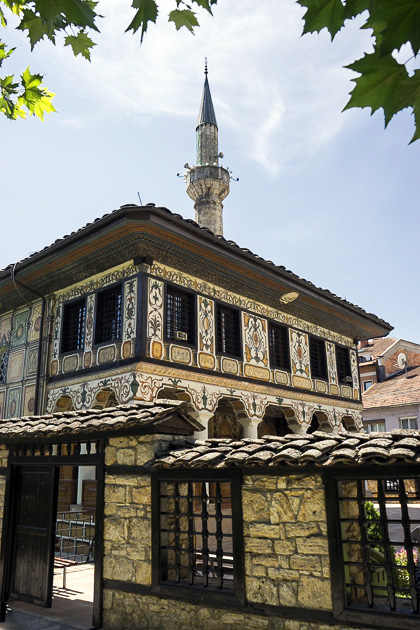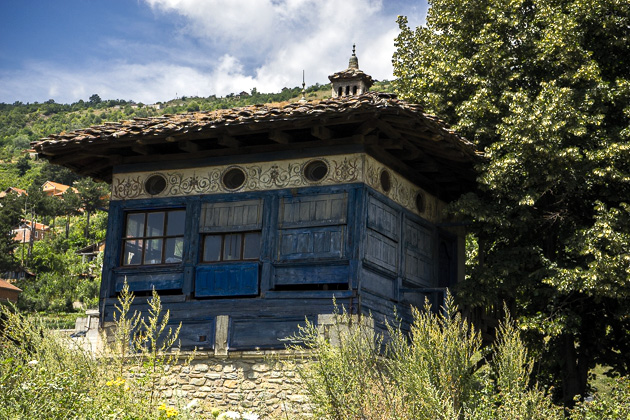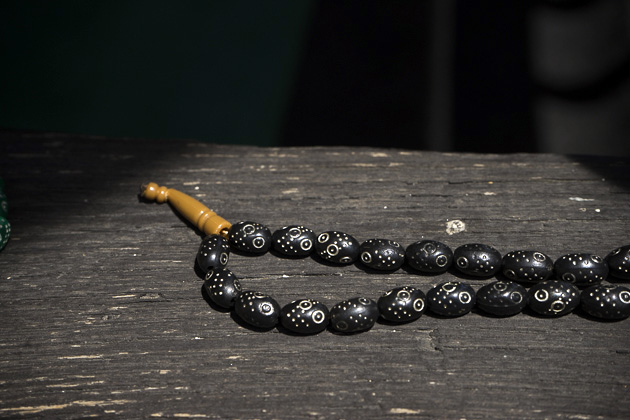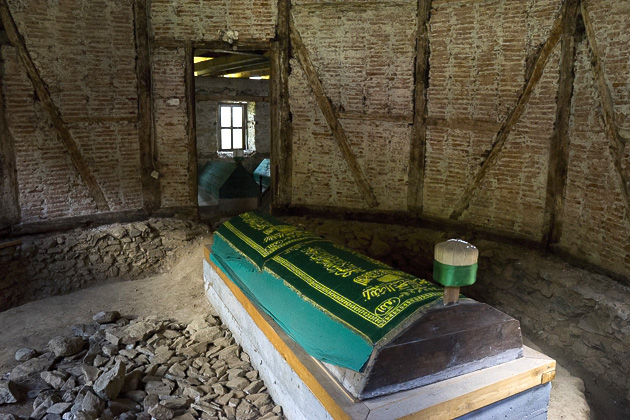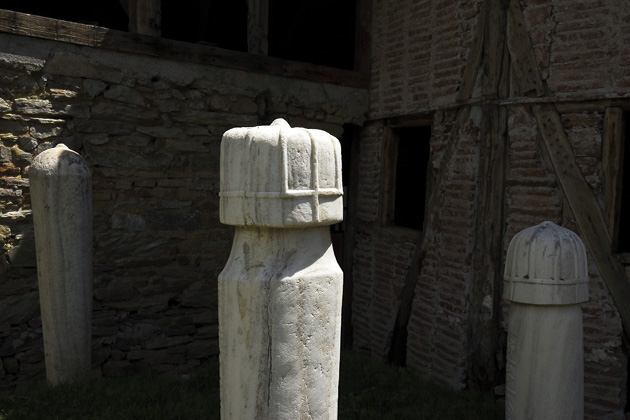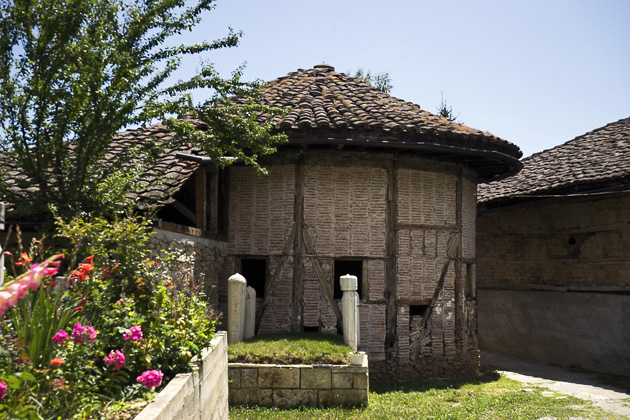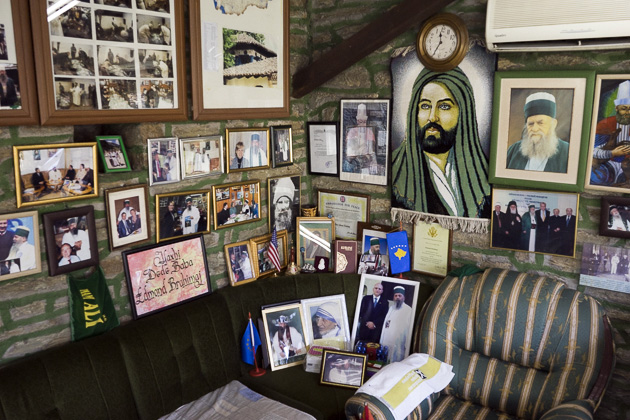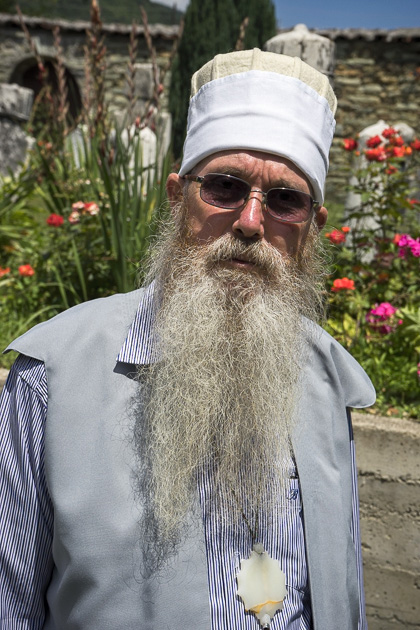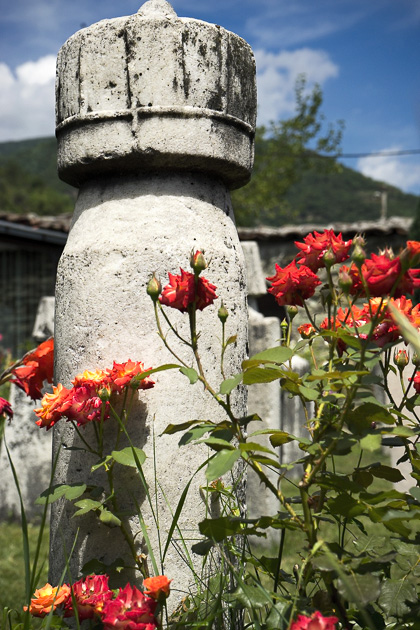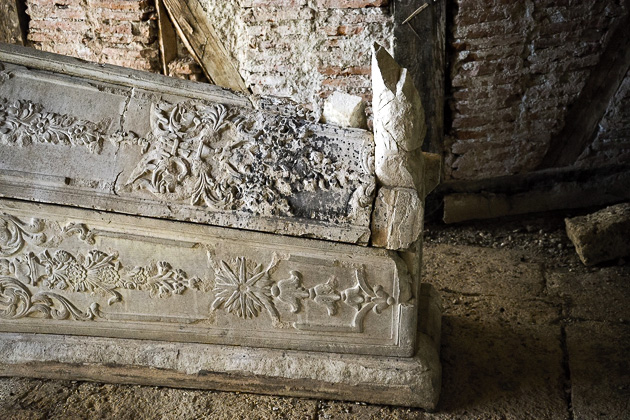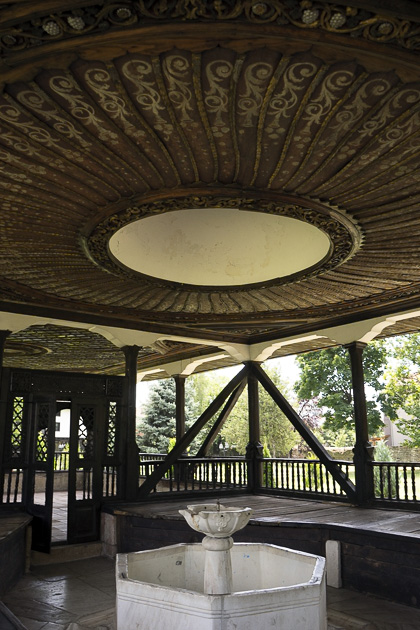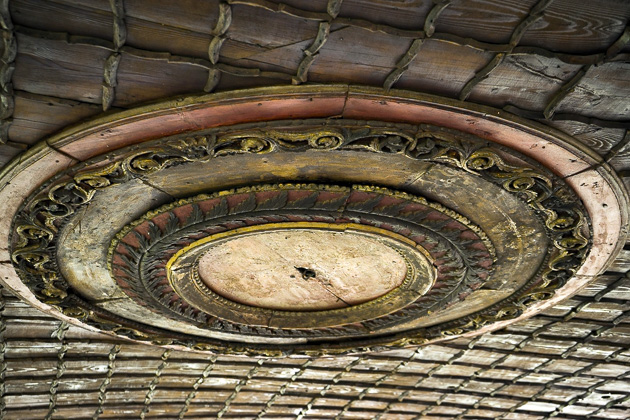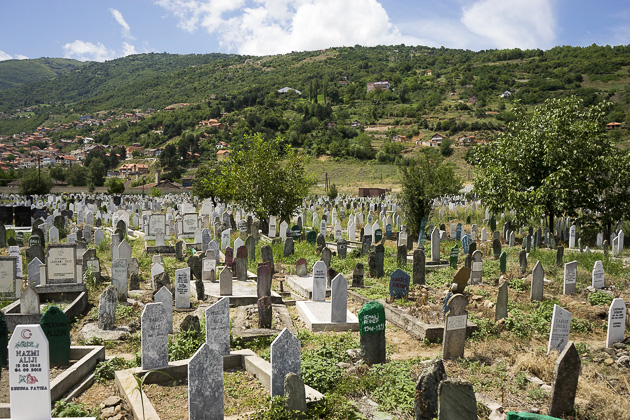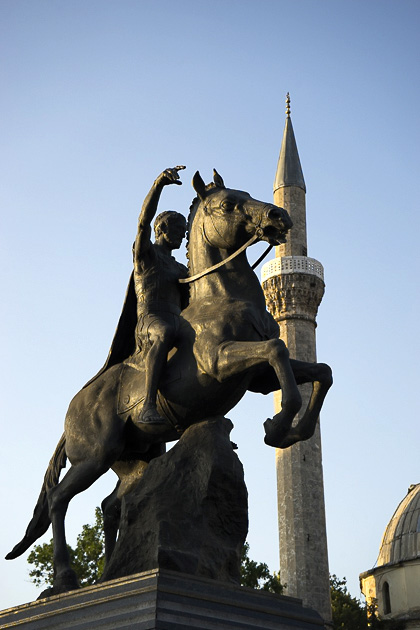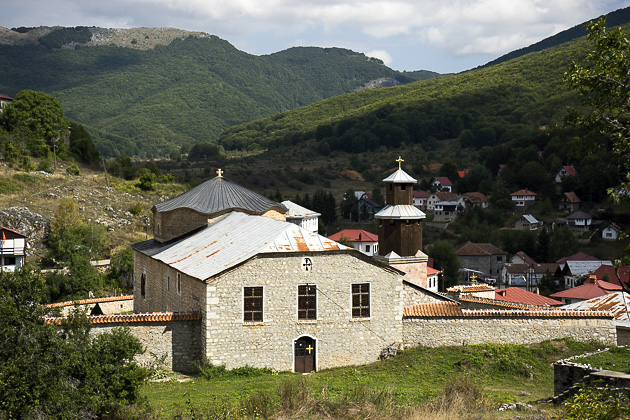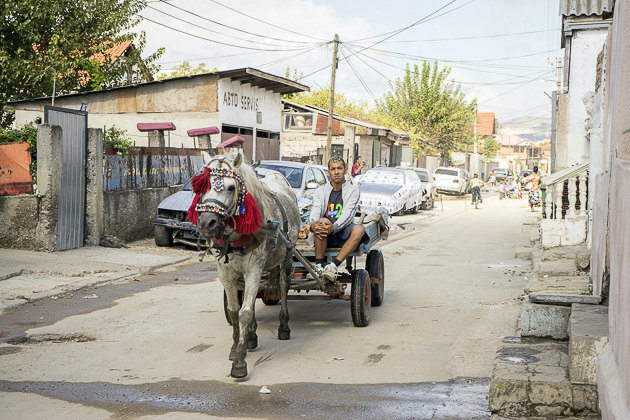The Painted Mosque and Arabati Baba Tekke in Tetovo
We weren’t entirely impressed with Tetovo during our short visit, finding it too noisy, crowded and hectic. But the city does have a couple things to recommend it. The Šarena Džamija, more commonly known as the Painted Mosque, and the Arabati Baba Tekke are two historic sites worth seeking out.
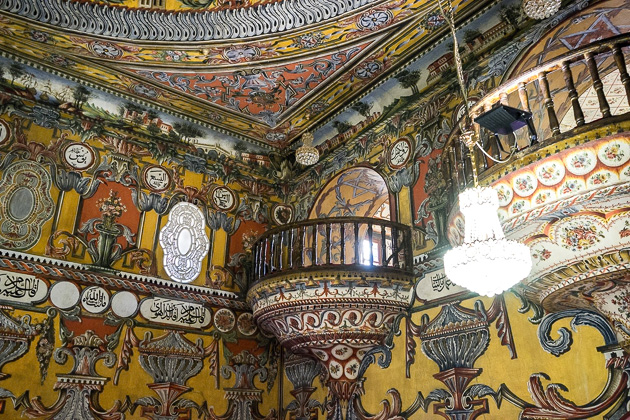
Tea gardens and cafes line the banks of the Pena River, which flows through the center of Tetovo. At the foot of an ancient stone bridge spanning the river, is the mosque of Šarena Džamija. Built in 1438 and reconstructed in 1833, the mosque is famous for its vibrant color scheme, with an exterior covered in rectangular designs that resemble playing cards.
We arrived just as an older gentleman wearing a white skullcap was opening the doors, and he ushered us inside, speaking German. It turned out that he had spent a decade working in Jürgen’s home town of Darmstadt. While the two of them reminisced about life in Hessen, I admired the mosque. The interior was as richly colored as the outside, decorated with floral motifs and cityscapes from around the Muslim world.
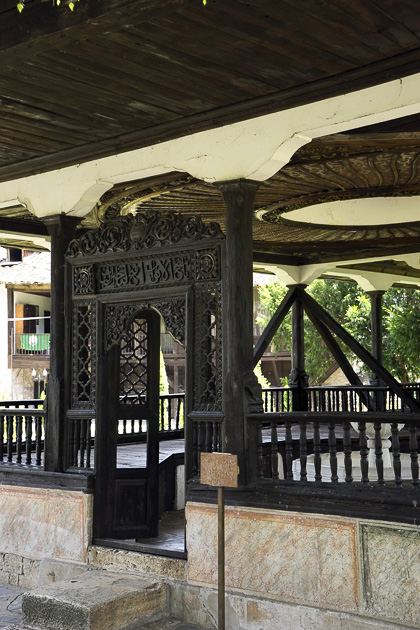
From here, it was about a ten minute walk to the Arabati Baba Tekke, on the southern edge of Tetovo. As we approached, I thought this tekke, or dervish monastery, might be abandoned, as it was eerily quiet and the entrance gate was almost falling off its hinges. But any such doubts evaporated, after we stepped inside and were greeted by a group of guys who jumped to their feet, asked where we were from, shook our hands, and offered to show us around.
The Arabati Baba Tekke was established in 1538 by Ali Baba, brother-in-law to Suleiman the Magnificent. After his sister had angered the Sultan, Ali Baba was exiled to Tetovo, which was on the fringes of the Ottoman Empire. Here he spent the rest of his years as a Bektashi dervish devoted to Sufism, a mystical branch of Islam.
Centuries later, the tekke is still in use, but only by a single dervish: a very tall man with a very long beard, whom we had the opportunity to meet. He showed us around his quarters, and brought us to the graves of the tekke’s former babas, or spiritual masters. Afterwards, he invited us to tea, served with apples picked from trees in the yard. Conversation was difficult, but we appreciated his hospitality — a trait which everyone in Macedonia seems to share, even Bektashi dervishes.
Locations on our Map: Šarena Džamija | Arabati Baba Tekke
–The Whirling Dervishes From Istanbul
